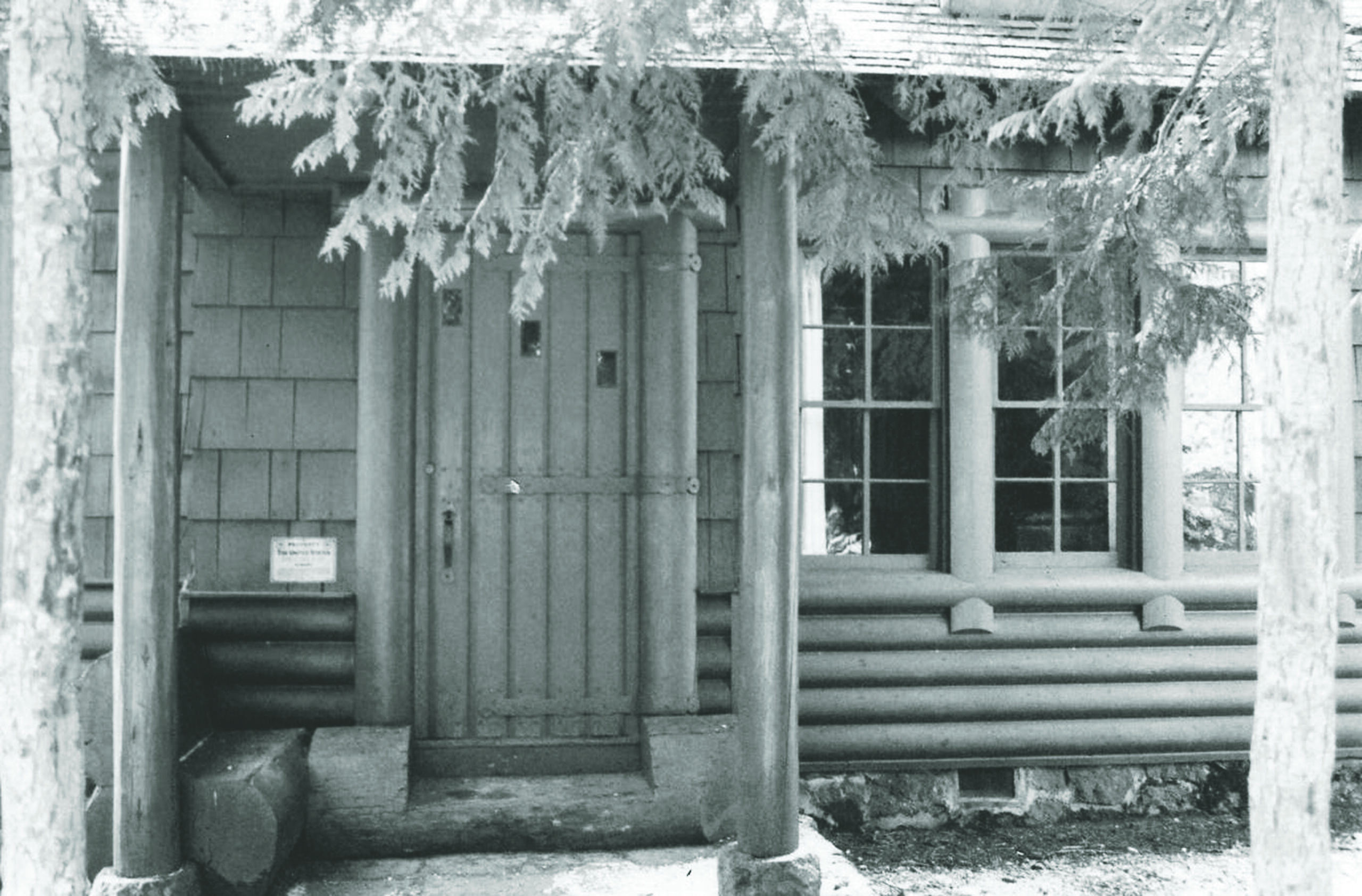By Lloyd Musser
The Mountain Times
UPCOMING
MUSEUM EVENTS:
June 15, 7:00 PM, Social History Happy Hour. Dr. Seth Moran, USGS Cascade Volcano Observatory will answer all your questions about Mount Hood, the volcano. July 20, 7:00 PM. Social History Happy Hour. Lloyd Musser, Mt. Hood Museum Curator will share the history and status of Mt. Hood Steiner Cabins. Social History Happy Hour is held on the third Saturday of each month. Doors open at 6:30. $5.00 donation asked. Beer, wine, and sodas available for sale.
Clackamas Lake Ranger Station Historic District is on the U.S. National Register of Historic Places. This Historic District is in the Mount Hood National Forest just 22 miles south of Government Camp, Oregon. Forest Road 42, the primary road leading to the popular recreation site Timothy Lake, passes thru the Historic District, but very few of the thousands of Timothy Lake visitors even realize this special place even exists. Those visitors who stop and explore the Historic District are rewarded by learning the long history of human use of the site and rich biological diversity of the area.
Clackamas Lake is a typical high mountain lake like the many found throughout the Cascade Mountains of Oregon. It is about three acres in size and not more than five feet deep. The lake is located at the west end of a very large meadow known as Big Meadows. This meadow is the head of the Oak Grove Fork of the Clackamas River. The lake is scientifically unique as it supports a population of Mares eggs, a rare blue-green algae.
The vegetation in the Historic District ranges from the sedges found in the meadows to the typical old growth Douglas Fir forest type. Huckleberries and edible mushrooms are abundant in this area. All the vegetation diversity can be observed along a hike of less than one mile. Park at the trailhead where the Pacific Crest National Scenic Trail crosses road 42. Walk south on the PCNST to the junction with the Miller Trail, which leads to Forest Road 42 and back to the parking area. Remember to look in Clackamas Lake for the rare blue-green algae, which resemble globs of clear jelly about the size of chicken eggs, floating in the lake.
The geographic location of Clackamas Lake and the natural vegetation of the area has attracted human use for hundreds of years. There was a trail along the crest of the Cascade Mountains used by the Indigenous people as a north/south trade route. A freelance fur trapper named Crawford camped at Clackamas Lake in September of 1808. Dr. Hubert Miller, a Portland dentist, was next to camp at the lake. Dr. Miller liked the area so well that by 1900 he had opened an eight-mile road from Clear Lake to Clackamas Lake, built a large log cabin and a large barn and begun experiments in growing fruit trees and vegetables at this high elevation site. Next to arrive on the scene was Ranger Joe Graham, in 1905. Ranger Graham thought Clackamas Lake was the perfect site for a ranger station to manage his new U.S. Forest Service, Lakes Ranger District. The Forest Service and Dr. Miller shared the site for the next sixty years until Dr. Miller died. The Forest Service built a campground on the site of Dr. Miller cabin and dedicated it to him in the late 1960s.
The buildings at the Ranger Station today were all built by the Civilian Conservation
Corp (CCC) in 1933 and 1934. The CCC was a depression-era program created to employ young, unskilled men. The Forest Service made good use of this labor pool in building this new complete compound at the Ranger Station. Hours of hand labor went into building each structure, from the stone foundations to the hand carved building-name signs. These 90-year-old buildings are a testament to the value of using rustic building design, quality building materials and lots of hand labor to construct outstanding ranger station buildings.
We encourage our readers to plan a visit to the Clackamas Lake Ranger Station Historic District. To learn more about the site, we suggest doing an internet search. The book titled “Tales of High Clackamas Country,” by F. Alton Everest, provides an anecdotal history of the historic site. This book is available at the Mt. Hood Museum gift shop or online at www.mthoodmuseum.org.
Lloyd Musser is the volunteer curator at the Mt. Hood Cultural Center and Museum. The Museum is located at 88900 E. US 26, Government Camp, Oregon. Open every day, 9 – 5 www.mthoodmuseum.org ph. 503-272-3301



